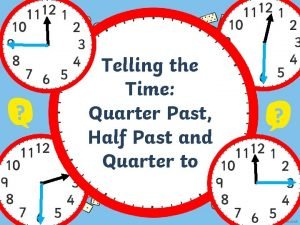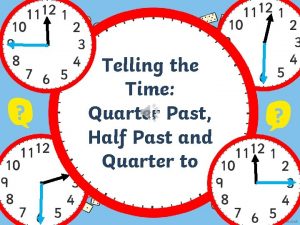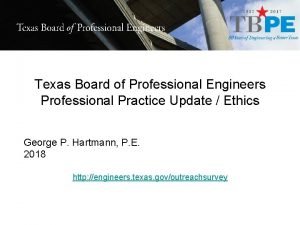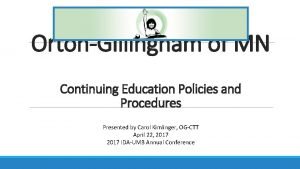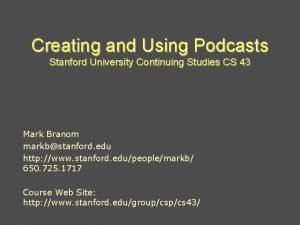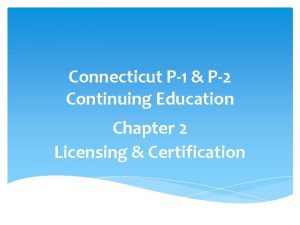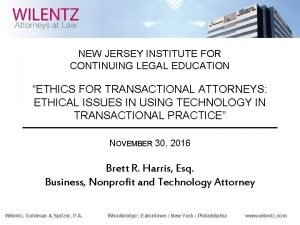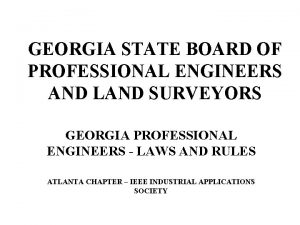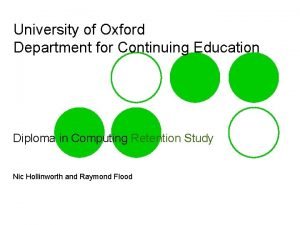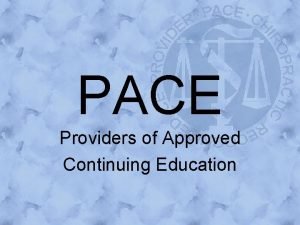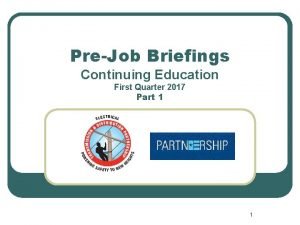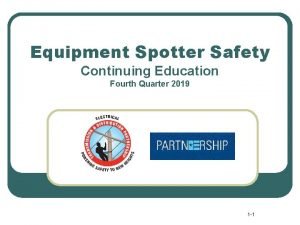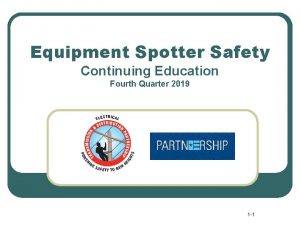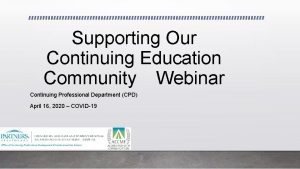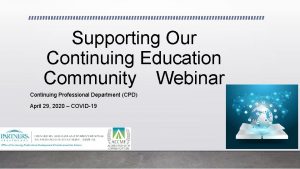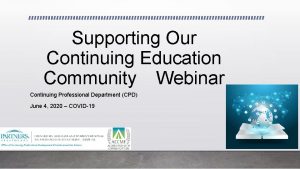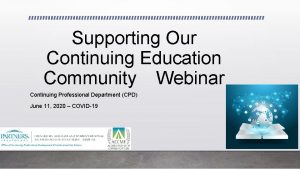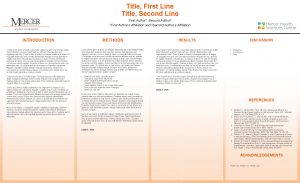Line of Fire Continuing Education First Quarter 2019















- Slides: 15

Line of Fire Continuing Education First Quarter 2019 1 -1

Objectives Upon completion of this continuing education module you should be able to: þ Define Line of Fire injury and hazard types þ Describe how to identify hazards associated with Line of Fire þ Describe how to eliminate Line of Fire hazards whenever possible þ Describe how to identify and control Line of Fire hazards þ Describe ways to use effective methods to minimize Line of Fire hazards 1 -2

Line of Fire Session One 1 -3

What is the “Line-of. Fire”? A simple definition “Being in Harm’s Way” Line of fire injuries can occur when the path of a moving object intersects with an individual’s body 1 -4

Primary Types Struck-by Hazards ü Occurs if a person is struck by an object Caught-in or Between Hazards ü Occurs if a person is caught inside of, or in between different objects Energy Released Hazards ü Occurs if a person is in the path of and suffers the consequences of released energy 1 -5

Before Starting Work Look for Line of Fire Hazards ü Line-of-Fire is the path of a moving object or, ü Path of an object that could move and, ü An injury may occur as a result of that movement 1 -6

Teamwork Questioning Attitude Steps • What are we going to do? Hazards Safe Guards What is the worst thing that can happen? If it all goes South, are we protected? Is what • • makes the Dream Work ? Self Check & Peer Check ? 1 -7

Eliminate the Hazard Once identified ü Take steps to eliminate the Hazard(s) Elimination of the Hazard should always be the First Consideration 1 -8

Control If the hazards cannot be eliminated E f f e c t i v e n e s s 1 -9

Minimize Line of Fire Hazards Be aware of the hazards ü ü We must understand • The Steps • The Hazards • The Safe Guards Take time to think about the consequences 1 -10

Struck-By Hazards 1 -11

Equipment Hazards If no Spotter ü 360° walk-around before first move If using a Spotter ü ü ü They can be seen Never directly behind equipment Loose site of each other, STOP! 1 -12

Work Practices During the job planning phase, ask the “What If” questions ü ü Am I or will I be in harm’s way? Will someone else be in harm’s way? Avoid This! 1 -13

Hand Position Be cognizant of hand placement ü ü ü Look for pinch points What if it moves Unexpected release of energy 1 -14

Key Points-Session One 1. Body position is a key component when identifying struck–by type line of fire hazards. a. True b. False 2. A good example of when to use Stop Work Authority (SWA) is if you loose sight of your spotter when backing a vehicle or piece of equipment. a. True b. False 3. If a spotter is not available, it is OK to back up as long as you sound the horn first. a. True b. False 4. A person that is in a position that allows them to be struck and injured if there is a movement of an object is exposed to a ______ injury. a. Struck-By b. Caught Between 1 -15
 Quarter to 1
Quarter to 1 Quarter past 6
Quarter past 6 San diego continuing education north city campus
San diego continuing education north city campus Texas board of professional engineers ethics exam
Texas board of professional engineers ethics exam Imslec
Imslec Stanford university continuing education
Stanford university continuing education Uconn continuing education
Uconn continuing education Ct p2 continuing education
Ct p2 continuing education Institute of continuing & tesol education
Institute of continuing & tesol education New jersey institute for continuing legal education
New jersey institute for continuing legal education Georgia board of engineers
Georgia board of engineers Life long education artinya
Life long education artinya Oxford continuing education
Oxford continuing education Dlgf(dlgf)continuing education/webinars
Dlgf(dlgf)continuing education/webinars Oxford dept of continuing education
Oxford dept of continuing education Pace chiropractic continuing education
Pace chiropractic continuing education
